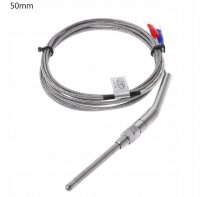brew starter
Active Member
- Joined
- Oct 13, 2021
- Messages
- 34
- Reaction score
- 1
Hi there
Been brewing for a while now on a starter kit (painful). Next step is to invest or build a PID controller and this is not tricky. However, with this amount of liquid and heat losses it is difficult to determine the correct setup. In some off the shelf kettles they use 2.5kW element and state that it is very efficient. I want to opt for a 2kw element, 40A SSR(overkill), thermocouple and a PID controller setup. For mash and sparge separately (8L + 17L) this should be okay right? Maybe I should opt for a 2nd element is parallel giving me 4kW total but I dont know if this will be just stupid.
Any advice before purchasing parts will be appreciated. descriptions below:
Heating element 2kW typ M2kW
Typ K thermocouple
SSR 40A DA
PID Controller
Been brewing for a while now on a starter kit (painful). Next step is to invest or build a PID controller and this is not tricky. However, with this amount of liquid and heat losses it is difficult to determine the correct setup. In some off the shelf kettles they use 2.5kW element and state that it is very efficient. I want to opt for a 2kw element, 40A SSR(overkill), thermocouple and a PID controller setup. For mash and sparge separately (8L + 17L) this should be okay right? Maybe I should opt for a 2nd element is parallel giving me 4kW total but I dont know if this will be just stupid.
Any advice before purchasing parts will be appreciated. descriptions below:
Heating element 2kW typ M2kW
Typ K thermocouple
SSR 40A DA
PID Controller






















































![Craft A Brew - Safale S-04 Dry Yeast - Fermentis - English Ale Dry Yeast - For English and American Ales and Hard Apple Ciders - Ingredients for Home Brewing - Beer Making Supplies - [1 Pack]](https://m.media-amazon.com/images/I/41fVGNh6JfL._SL500_.jpg)












